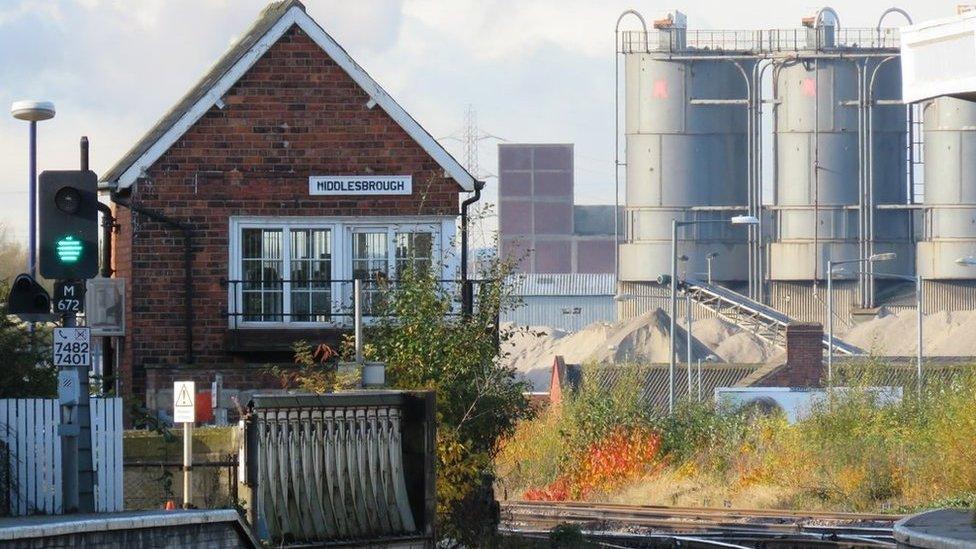Middlesbrough's Forty Foot Road naming theory put to the test
- Published
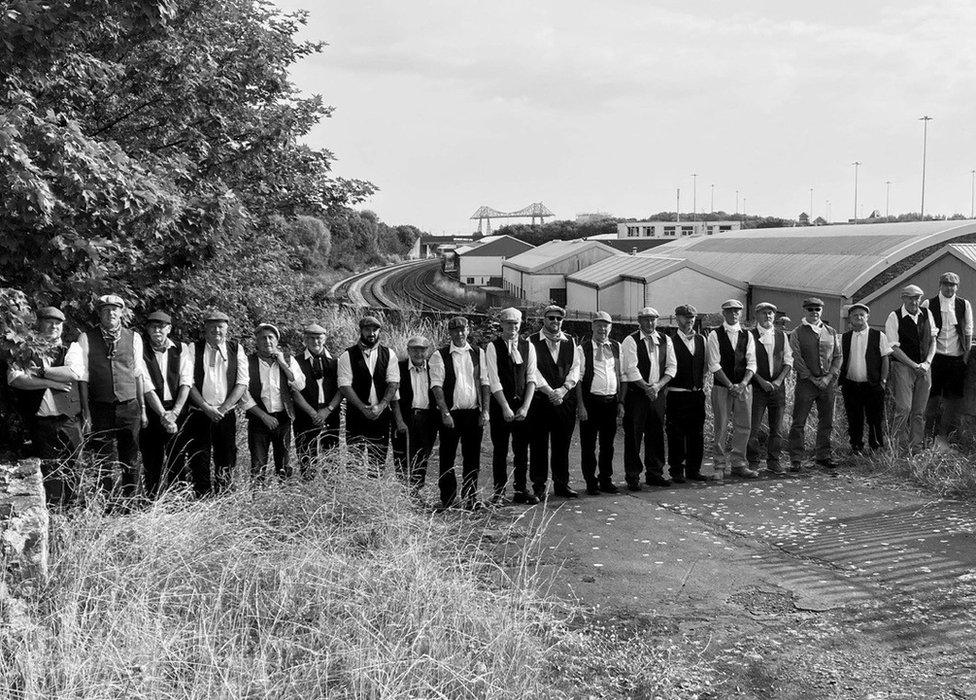
The 20 men from Hemlington stood across the road to see if they could fit
A history buff has put forward his own theory about how a road linked to a town's industrial past got its name.
Craig Bulman believes Forty Foot Road in Middlesbrough was so named because its width has the capacity to accommodate up to 20 working men.
To test the idea he recruited a group from Hemlington to stand across the road in Victorian dress in tribute to their ancestors.
He said it had "always been one of Middlesbrough's unanswered questions".
In 1850, a new industry exploded in the town with the discovery of iron ore in the Cleveland Hills, and thousands flooded into the area for work.
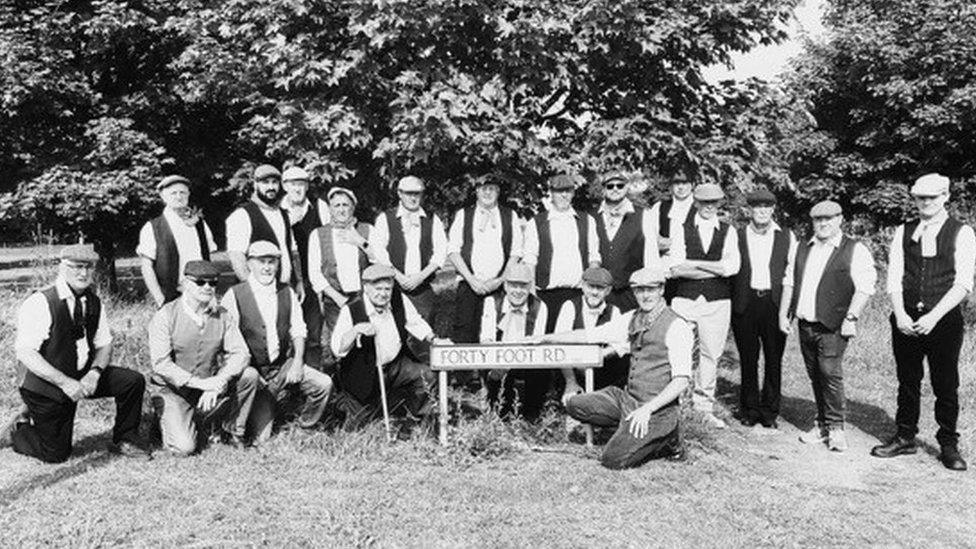
This group wore flatcaps, mufflers and waistcoats as a tribute to their ancestors
Mr Bulman believes the road was designed to get them to and from their jobs and to keep them away from the railway lines.
"There are substantial walls either side of this road," he said.
"At the end of their shift when the hooter goes, out they pour, hundreds and hundreds of them - like after the football - and the only way they can go is down the Forty Foot Road.
"I can picture all of that which is why I wanted to show it - I'm fully confident that's what it is."
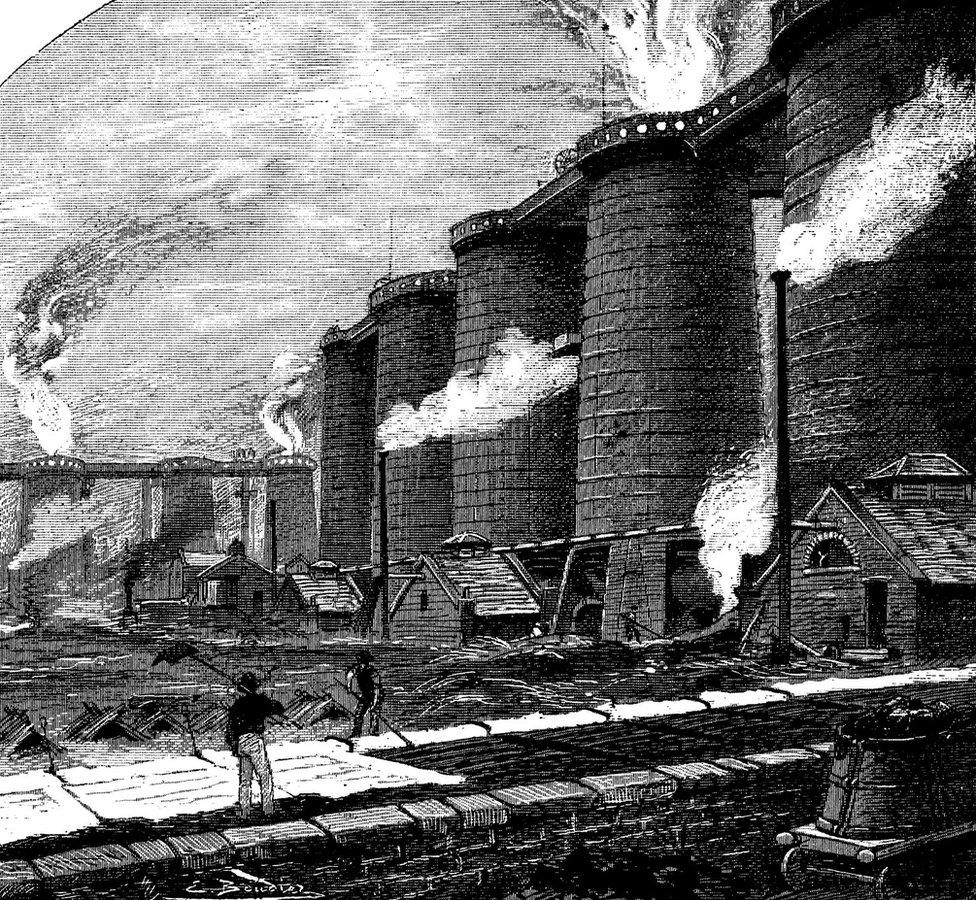
In the 1800s Middlesbrough was a booming industrial town
'Beams or bridge'
Mr Bulman, a postman, said the mystery surrounding its name would often come up during his rounds.
"We wanted to demonstrate the capacity of the road, even though we are slightly broader than they were in the Victorian times.
"The men who took part are all working class men from Hemlington - some of them have retired - they all love their local history and wanted to help play their part in demonstrating what I was trying to show."
Mr Bulman has called for the road to get a permanent memorial to honour the workers who used the route each day.

Craig at the eastern side wall of the original Forty Foot Road
Historian Dr Tosh Warwick, from Heritage Unlocked, said there were many "plausible theories" but no definitive answer.
He suggested it could have taken its name from where 40ft sections of beams were stored or because it was near a 40ft bridge.
"It's great that people are taking an interest in Teesside's industrial heritage," he said.
"Craig is inspiring people to delve into the area's past and anyone doing that should be commended."

Follow BBC North East & Cumbria on Twitter, external, Facebook, external and Instagram, external. Send your story ideas to northeastandcumbria@bbc.co.uk, external.
Related topics
- Published24 August 2022
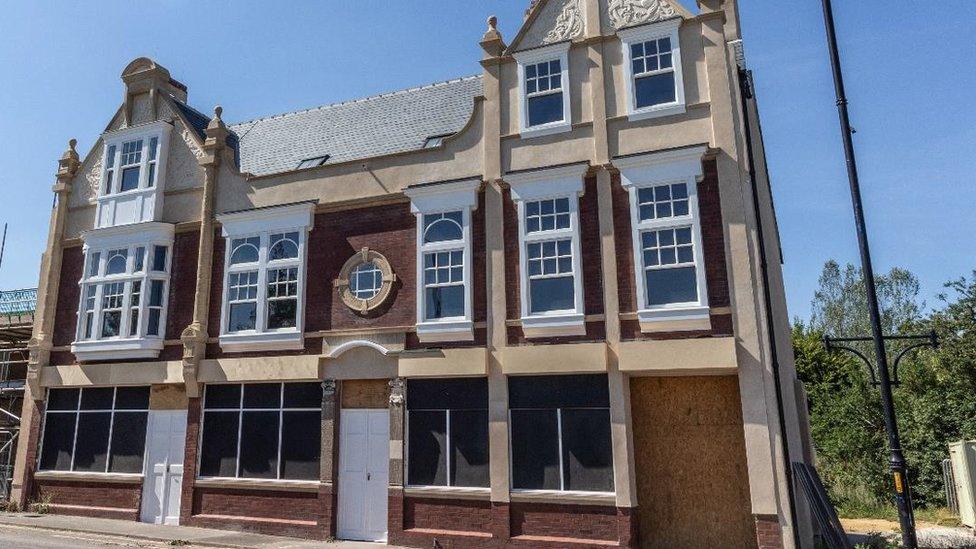
- Published13 November 2021
